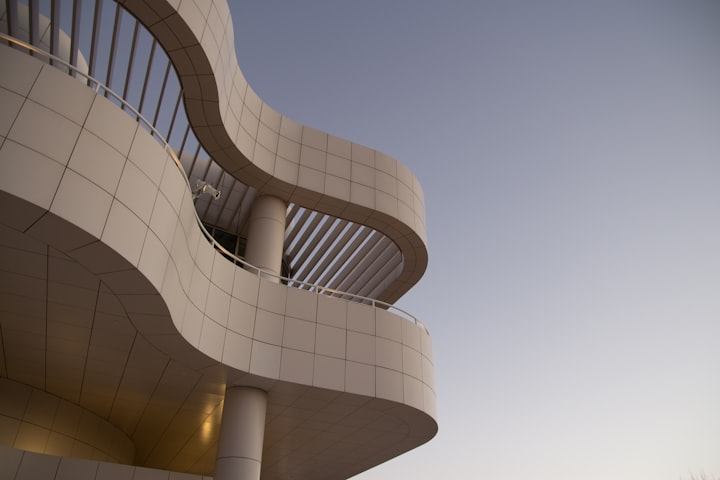To the Getty, Us Nerds want more placards!
A College Students Getty Review

Much love to the Getty, if you've never been to a Getty College night then you don't sleep with enough geeks.
When visiting the Getty Center I found the museum to be a very aesthetically pleasing place. The architecture is fascinating and the views of Los Angeles are astonishing. Even the art exhibits are set up in a way that pleases the eye. However I feel that the arrangement of the museum detracted from the experience. It took emphasis off the art and did not maximize the educational value of being inside the museum.
For instance the Power and Pathos exhibit was well set up, the pieces were mounted in a visually pleasing way, however there seemed to be a lot of information missing. When I was in this exhibit I lingered behind a museum docent and a graduate seminar talking about the art, the docent spoke about two figures placed next to each other in the exhibit for a long time. Both pieces were similar and their plaques below both said “Herm of Dionysius” “200-100 CE”. The museum plaques offered very little information about these two pieces which at first glance interested me very little, I did wonder what the ancient world could possibly want with a head and penis mounted to a pillar. Luckily the docent got right in on that, he said that they were used as protective figures for a garden. The docent then explained that the two pieces though minutely different were made in the same workshop, in the same week, and from the same original cast. Later he claimed that the pieces were probably sold at different prices indicating the one with more added detail would be the more pricey and exclusive of the two. Lastly he explained the drastic differences in their outer appearance, both metals were tarnished in very different ways, one was found under ground and one was found in a ship wreck. I found all this information fascinating, and more important was the fact that the museum had access to all this information and did not post it with the art. I was lucky to have been behind the guide and gained this knowledge. Later in the exhibit I saw “The Medici Riccardi Horse 350 BCE” and I really liked it, it was a very natural representation, the muscles looked real, and everything about it looked like it came from a living horse. However I was no longer behind the tour guide; so I know very little about this piece, nothing of where it came from or what purpose it served. That is I think the biggest flaw of the museum, the ascetics of the art are shared with the people, but the information and education available doesn’t seem to be emphasized. There was one panel that gave very minimal background information on the exhibit, explaining how classical Greek art is different from Hellenistic art because Hellenistic art is more outwardly emotional. Next to this panel a map showed how it was diffused through the Mediterranean by Greek trade and emphasized that there were minute differences between localities in their style.
After exiting the temporary museum hall I wandered the museum for a long time trying observe all the art; and though I find the buildings design beautiful, it is immensely confusing. I spent hours in there and I’m sure I did not see all the exhibits, some random wing got lost or even an entire floor. Which is disappointing because I did want to see everything. Luckily I did stumble upon the area with medieval text illumination. The room was set up strangely so finding a piece before 1300 was difficult, the age of the text didn’t seem to matter in the display case. The one book I did find was placed next to two from the 1500s. The gold leafing seemed to be the primary part of the illumination before 1300, as the later pieces in the museum seemed to have toned it down. The drawings around the gold were of very pale colors and before 1300 at least seemed to have religion as central to the art.
Lastly I went searching for the Belvedere Antinous and that was very difficult. Part of my difficulty in finding it was the fact that I was expecting a very large statue. But I became frustrated with the museum because there was no system that I could find to help locate a specific piece. When I finally did find the statue I was a little annoyed at the placement. I felt as though the statues origins as a Renaissance sculpture form Italy should determine its placement in the museum. Not the fact that Luis XIV owned it. Apart from all the frustration I found the piece to be very neat looking. The natural elements, Contrapposto, and expression all resembled that of Classical Greek work.
Overall I’m glad I went to the Getty but I think that the Getty like all things is imperfect. The access the Getty allows people to art is amazing, and the aesthetic qualities really are well done. I just think personally the organization of the museum and the information provided with the art could be worked on.
This review of the Getty was orinally written for a grade in 2015, for an art history class at CSULB.





Comments
There are no comments for this story
Be the first to respond and start the conversation.